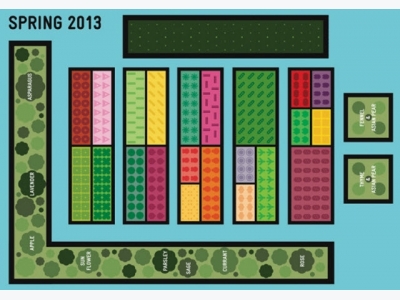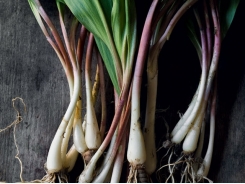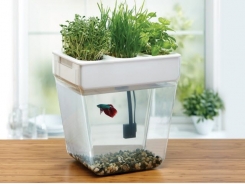How To Turn Your Backyard into a Four-Season Farm

Garden Design by Jack Algiere , Illustrations by MGMT. Design
According to Jack Algiere, the Vegetable Farm Manager at Stone Barns Center for Food and Agriculture, turning your garden into a four-season farm is easier than you think.
Below, he outlines his plan for eating from your backyard year-round. Each bed is designed in a block and each year the crops are rotated to the next block. Plants should be planted in botanical families so families can live together in the same block of the garden bed. Most importantly: plant what you like to eat.

Spring, Year One
The key to spring planting is timing: Plant peas, radishes and spinach in March for eating in June. You can also plant parsnips but should leave them in the ground all summer so you can eat them all winter long. Plant Brussels sprouts, collards and Portuguese kale—all good summer greens. Also in April, plant potatoes, Swiss chard, onions, leeks and beets, which you will eat througout summer. In early May, get your nightshades (eggplants, peppers, tomatoes, potatoes) in the ground so you’ll be eating them from late July until the first frost. Spring plantings of spinach, beets, lettuce and mustard will be harvested in July to make room for fall vegetables. As soon as there is no risk of frost, plant your tomatoes—but be sure to keep them 2.5 feet apart. Spacing is important—you don’t get more food by planting vegetables closer together! Perennial herbs like sage, rosemary and thyme are a good border for the garden—deer don’t like them.”

Fall, Year One
Fall plantings can make it all winter if you protect them from the wind and frost. Spinach, lettuce and mustard can be planted continuously from July through October and will feed you from September through winter. Plant kale, cabbage, cauliflower and broccoli starting in late July for a fall harvest. Plant carrots and beets in August for a great crop in October. You have to think ahead for garlic: plant in late fall (by the last week in October) for next-July eating.
Spring, Year Two
Repeat the previous year, but move everything over one bed and use what you learned in the last 12 months. Did you plant too much lettuce? If so, stagger your lettuce planting by two weeks and plant in succession so everything doesn’t ripen at once. Did you overseed or overplant? If things got too crowded, plant less this year. Blocks of vegetables planted together will generally stay the same (so family groups stay intact as the plants move through the rotation). The overall structure shouldn’t change but the varieties can vary.

Fall, Year Two
You should have the hang of it by now and can get creative. Learn about new vegetables. (Try growing winter cabbages!) Plant bulbs this year, such as tulips and daffodils. As long as rotations are established and you have order, you can experiment with pushing planting times and trying new things. See how the garden reacts to different approaches. Branch out. Have fun and grow what you love to eat.
Related news
Tools

Phối trộn thức ăn chăn nuôi

Pha dung dịch thủy canh

Định mức cho tôm ăn

Phối trộn phân bón NPK

Xác định tỷ lệ tôm sống

Chuyển đổi đơn vị phân bón

Xác định công suất sục khí

Chuyển đổi đơn vị tôm

Tính diện tích nhà kính

Tính thể tích ao



 How To Build a Worm Farm
How To Build a Worm Farm  Aquaponics at Home: A Modern Farmer Review of…
Aquaponics at Home: A Modern Farmer Review of…